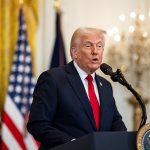The long and brutal conflict between Ukraine and Russia, which has dragged on and devastated the region for over a decade, is suddenly witnessing new momentum toward peace thanks to the Trump administration's bold diplomatic efforts. After years of ineffective foreign policies under previous administrations that favored political correctness and globalist agendas over real American leadership, it is the negotiation skills of Donald Trump that have brought both sides closer to the negotiating table. The Trump administration has crafted a detailed peace framework that trims down the contentious issues while addressing the core security concerns of both Ukraine and Russia—a practical approach that had been missing before.
Central to this breakthrough is the Trump administration's proposed peace plan, initially spanning 28 points but recently refined to a more focused 19-point framework. This plan is unique in that it recognizes the realities on the ground, including Ukraine relinquishing claims to certain eastern territories and Crimea, while also requiring Ukraine to forgo NATO membership. At the same time, it includes security guarantees, a non-aggression pact involving Russia, Ukraine, and Europe, and provisions for U.S.-Russia collaboration on arms control and economic cooperation. This kind of straightforward dealmaking reflects Trump's reputation as a dealmaker, willing to face tough truths and pursue compromises that previous leaders avoided.
🚨 HUGE WIN FOR TRUMP: Peace talks between Russia and Ukraine are finally breaking open — and Trump just confirmed “We’re making progress.” 🇺🇸✌️
He says Russia is making concessions, Ukraine is “pretty happy,” and both sides want this war ended, not dragged out. Trump’s envoy… pic.twitter.com/UlPI7Jf17o
— Jake (@JakeCan72) November 27, 2025
The Trump approach has defied the usual political fog and media hostility by engaging directly and pragmatically with all parties, including Russia—a stance many leaders shied away from out of fear of backlash or excessive political correctness. Unlike the establishment’s fixation with endless sanctions and blame games, Trump's diplomacy pragmatically seeks to incentivize both sides toward peace. His administration’s willingness to address Russia’s concerns without abandoning Ukrainian sovereignty has ignited hope for a real ceasefire, a feat that was unimaginable under the timid strategies of the Biden and Obama administrations.
Critics have often mischaracterized Trump's boldness as recklessness, yet his pragmatic engagement is proving essential to breaking the deadlock. The peace talks are now entering a phase where key diplomatic players, energized by Trump's role, are seriously contemplating peace rather than escalating conflict. This shift signals that strong leadership rooted in negotiation, respect for power balances, and strategic compromise can achieve tangible results—results sorely lacking throughout the last decade of American foreign policy missteps.
As the world watches, it becomes clear that America’s global leadership must be reasserted not through endless conflicts and virtue signaling but through savvy diplomacy and real negotiations. Trump’s peace framework offers a path forward, challenging the failed progressive mindset that perpetuates division and warfare. If political leaders were to learn from his bold, deal-oriented example, there could be hope for resolving other global conflicts with dignity and American interests firmly in mind. The Ukraine-Russia peace talks driven by Trump's administration represent a pivotal moment where negotiation triumphs over ideology and American strength leads to a safer world.




